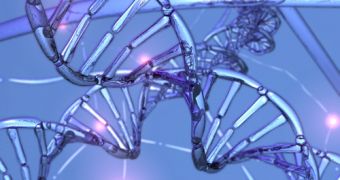95 % of our genome has been thought to be just junk, or simply a useless desert. Up until now, as some scientists have started to disagree on this idea. One of them is Professor Alexandre Reymond, from the Center for Integrative Genomics, University of Lausanne, Switzerland and the Department of Genetic Medicine, University of Geneva, Geneva, Switzerland, who now claims that the previously considered "junk" DNA is actually teeming with life.
"Most known human genes in the genome map are still incompletely annotated. We found that the vast majority of the protein coding genes we studied utilized often in a tissue-specific manner previously unknown set of exons [the regions of DNA within a gene that are transcribed to messenger RNA] outside the current boundaries of the annotated genes" said Reymond.
His team is involved in a pilot project to use as a 'reference set' by the ENCODE consortium, launched in 2003 by the National Human Genome Research Institute, part of the US National Institutes of Health, with the main goal of detecting all functional elements in the human genome sequence. The pilot phase consists in analyzing 44 regions, compassing about 1% of the human genome. By checking and comparing current methods for annotating the human genome, the consortium will try to detect the most effective methods of analyzing it in its entirety.
The finished human genome sequence, made public in 2003, was a breakthrough, but many unanswered questions remained. For its best use, identification and precise location of all the protein-encoding and non protein-encoding regions in the genome must be accomplished.
"The notion that mammalian transcriptomes [the set of all messenger RNA molecules produced in a population of cells] are made of a swarming mass of different overlapping transcripts, together with our findings that suggest we have only uncovered a portion of its complexity, has important implications for medicine. They increase the size of the genomic regions that might harbor disease-causing mutations, and they could impair cloning strategies that try to find genes implicated in these pathologies." said Reymond.
"Extra caution should be used when associating a genetic phenotype with a gene knock-out or knock-in, where genes are added or deleted from a model organism in order to study the effect of therapies. It appears that the same nucleotide [the structural unit of DNA and RNA] on the genome can carry out a number of different, sometimes simultaneous, functions."
Reymond's team - in collaboration with British, American and Spanish teams - is going to make this type of analysis on two human chromosomes.

 14 DAY TRIAL //
14 DAY TRIAL //